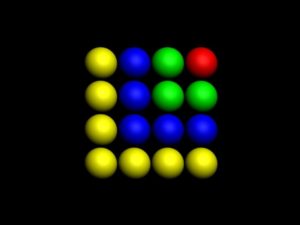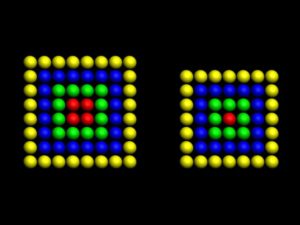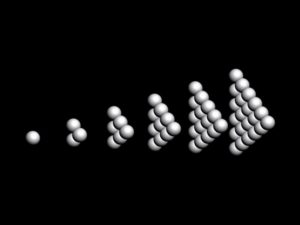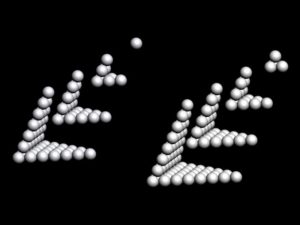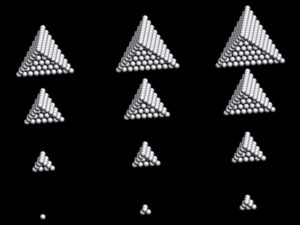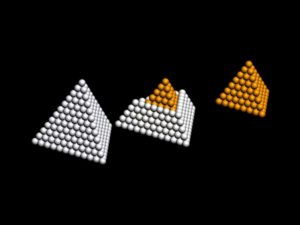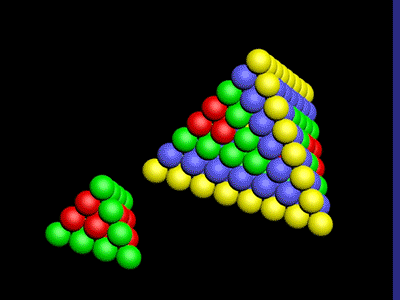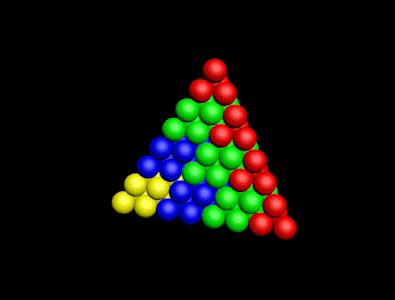Abstract
This work shows the possibility and applicability of the methodological approach of the ancient mathematicians to the questions raised by scientists relatively recently. The concept of figurate numbers is being applied to the problem of periodicity in the microcosm.
It is should be noted that the Pythagorean approach demonstrates the principle of simplicity, or the Principle of Parsimony in science.
Introduction
The mathematical study of figurate numbers is said to have originated with Pythagoras, possibly based on Babylonian or Egyptian precursors. Generating whichever class of figurate numbers the Pythagoreans studied using gnomons is also attributed to Pythagoras.
Gnomon
A gnomon [ˈnoʊmɒn] NO-mon, from Greek γνώμων, gnōmōn, literally “one that knows or examines”, is the part of a sundial that casts the shadow. The term has come to be used for a variety of purposes in mathematics and other fields.
Hero of Alexandria (also known as Heron of Alexandria c. 10 – c. 70 AD) defined the gnomon as that form which, when added to some form, results in a new form, similar to the original.
Non-minimal 1D gnomon – frame
The available literature says nothing about how many gnomon variations a figure can have. For a rectangle, including square, a minimal gnomon is L-shaped figure.
But the frame figure can also serve as gnomon for the rectangle.
The dimension of the gnomon is one less than the dimension of the figure itself. Gnomons for one-dimensional line (string of beads) are the points with zero dimension. Gnomon for a two-dimensional figure is a one-dimensional figure. Gnomon for volumetric figure is a plane figure.
Non-minimal 2D gnomon – shell
One can offer the concept of volume figurate number shell as the non-minimal gnomon. Shell then is a gnomon the shape of which is similar to the whole volumetric figure, but it is a hollow figure.
Tetrahedron
Consider a tetrahedron.
VolumeOfTheTetrahedronn = (n(n+1)(n+2))/6 = 1, 4, 10, 20, 35, 56, 84, 120, 165, … ;
n = 1, 2, 3, … . n – length of the edge of the figure.
If we limit the number of all possible gnomons varieties by monolayer figures, one can count 4 kinds of gnomons:
1) triangle, 2) bent square, 3) trihedral cap, 4) shell.
Fig. 4. The odd sequence (left) and the even sequence (right) of the bent square gnomons of the tetrahedron.
One of the four possible sequences of tetrahedron shells is:
ShellOfTheTetrahedron= 2*(2*12 + 2*22), 2*(2*32 + 2*42), 2*(2*52 + 2*62), …=
= 20, 100, 244, ….
Theorem:
In terms of figurate numbers, one can construct a sequence of tetrahedra, the shells of which are equal to the double sum of two consecutive double squares of natural numbers. What is the point of such construction?
Described structure of repeating doubled squares corresponds the structure of the table of the periodic law of elements.
Some scientists pay tribute to the table proposed by the French scholar Janet.
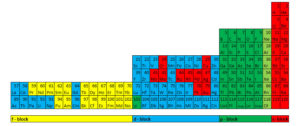 Fig. 7. Periodic table of the elements based on the electronic structure of atoms. Janet (1929), Tarantola (2000), etc.
Fig. 7. Periodic table of the elements based on the electronic structure of atoms. Janet (1929), Tarantola (2000), etc.
The length of the period in the periodic law, as is well known, is equal to 2n2.
Periods of equal length are encountered twice in the table.
Our proposition
Three-dimensional table of the periodic law can be constructed in the form of a tetrahedron having an inner order. A comparison of the tetrahedron shells and the table of elements shows, that one tetrahedron shell corresponds to 4 periods of the 2D table.
It was also shown previously that the electron shells in the atoms and square gnomons are isomorphic [1].
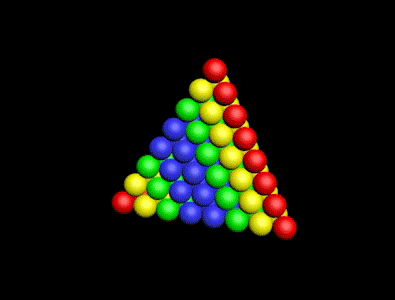
Fig. 9. Tetrahedral Periodic Table. Pay attention to the fancy order of layers alternation: s-f-p-d-d-p-f-s or 0-3-1-2-2-1-3-0.
Note that any modification of the periodic law table is abstract duality. On the one hand, it is simply an ordered list of existing or hypothetical elements. On the other hand, the table reflects the structural characteristics of the nucleus and electron shells of the atom. So, the number of balls in the model corresponds to the number of protons in the nucleus and electrons in orbitals. With a certain degree of abstraction our figures can be considered as a model of the atom.
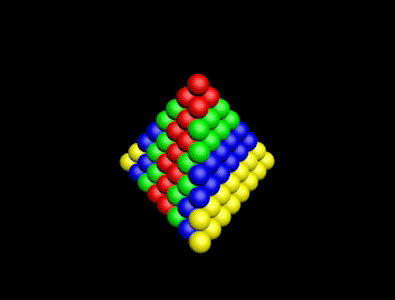
Fig. 11. Tableau 3D/03. Tableau en pyramide tétraédrique de 120 boules. QbS2Fig312.gif (based on the Pierre Demers’s site http://www.lisulf.quebec/NTabl3Dbis.htm)
Another Tetrahedral Periodic Table
These tetrahedra have two dimensions, like sphere have two dimensions in contrast to ball.
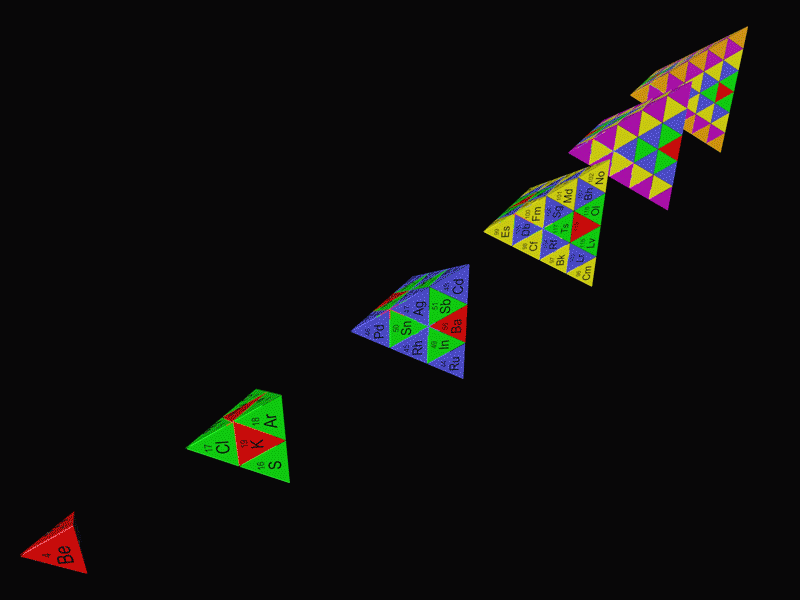
Fig. 12. The tetrahedral Two-dimentional Periodic Table based on Native American ornament. Every tetrahedra contains two periods of Periodic Table.
Triangle

Fig. 13. Triangular forms of Table of D. I. Mendeleev’s Periodic law. s-elements – red; p-elements – green; d-elements – blue; f-elements – yellow.
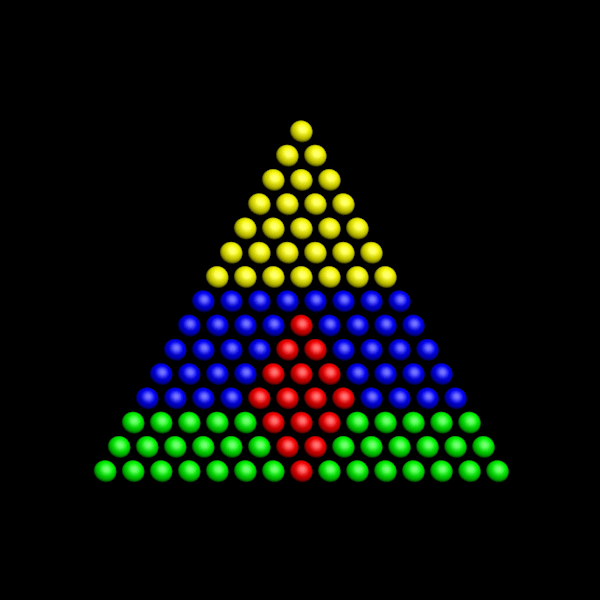
Fig. 14. Triangular forms of Table of D. I. Mendeleev’s Periodic law. s-elements – red; p-elements – green; d-elements – blue; f-elements – yellow.
The only triangular numbers that are also tetrahedral numbers are 1, 10, 120, 1540, and 7140.
Triangular(1) = 1 = Tetrahedral(1)
Triangular(4) = 10 = Tetrahedral(3)
Triangular(15) = 120 = Tetrahedral(8)
Triangular(55) = 1540 = Tetrahedral(20)
Triangular(119) = 7140 = Tetrahedral(34)
Thus the triangular shape of the Periodic Table does not have the properties of fractals. Unlike tetrahedron, it is not a self-similar pattern for Periodic Law.
REFERENCES
Weise, D. (2003): The Pythagorean approach to the problems of periodicity in chemistry and nuclear physics, In: Progress in Theoretical Chemistry and Physics, Vol.12, Advanced Topics in Theoretical Chemical Physics, Edited by Jean Maruany, Roland Lefebvre, and Erkki J. Brändas ISBN: 978-90-481-6401-1 (Print) 978-94-017-0635-3 (Online).
25.12.2016

